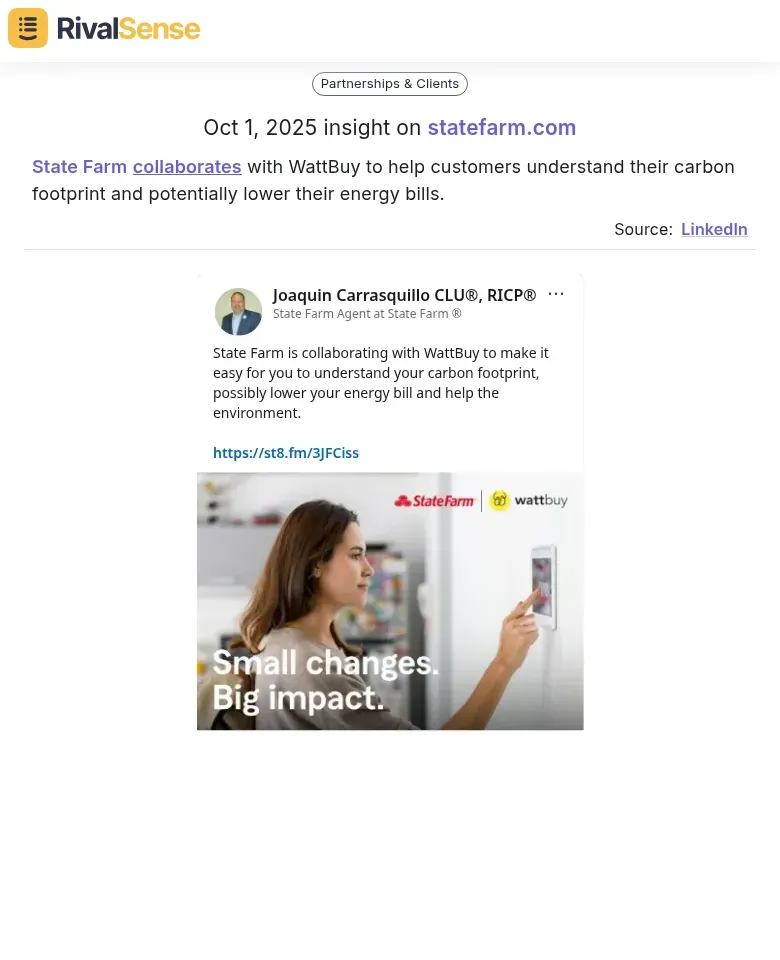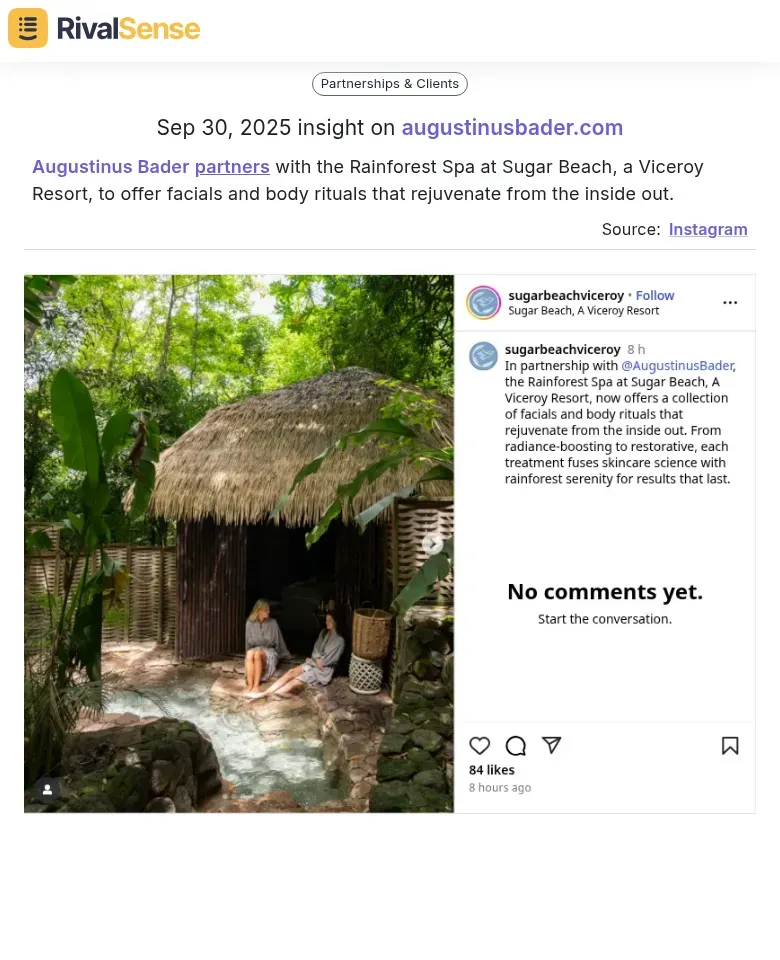How to Track Competitor Content Performance: A Step-by-Step Guide for B2B Leaders
As a founder or business leader, you know that understanding your competitors' content strategy is essential for staying ahead in the B2B landscape. However, with numerous platforms and metrics to monitor, tracking competitor content performance can feel overwhelming without a structured approach. In this guide, I'll walk you through practical steps and strategies to effectively monitor competitor content and turn insights into competitive advantages for your business.
Why Tracking Competitor Content Performance Matters
Tracking competitor content performance provides critical insights that can shape your strategic decisions and help you stay competitive. For instance, when I worked with a B2B SaaS startup, we discovered that our main competitor was gaining significant traction through LinkedIn thought leadership content we'd overlooked. By analyzing their performance, we identified gaps in our strategy and adjusted our approach, resulting in a 40% increase in qualified leads within three months.
Competitor content tracking helps you:
- Identify content gaps and opportunities in your niche
- Understand what resonates with your shared audience
- Benchmark your performance against industry standards
- Stay ahead of market trends and shifts
- Optimize your content strategy based on proven results
Step-by-Step Framework for Tracking Competitor Content Performance
Step 1: Identify Your Key Competitors
Building a clear competitor list is the first step to organized tracking, as it ensures you focus on the right players in your market. Start by categorizing competitors to avoid missing indirect threats or aspirational benchmarks. Create a comprehensive competitor list that includes:
- Direct competitors: Companies offering similar products/services
- Indirect competitors: Companies solving the same problems differently
- Aspirational competitors: Industry leaders you want to emulate
Practical Tip: Use a spreadsheet to log competitor names, primary content channels, and specific tracking goals for each. 📊
Step 2: Define What to Track
Not all metrics are equally important, so focusing on the right KPIs saves time and drives actionable insights. Prioritize metrics that align with your business objectives, such as engagement, growth, and content quality. Key performance indicators to track include:
| Metric Category | Examples | Why It Matters |
|---|---|---|
| Engagement Metrics | Likes, shares, comments, engagement rates | Shows how audiences interact with content |
| Growth Metrics | Follower growth, reach, share of voice | Indicates competitive positioning and trends |
| Content Quality Indicators | Top themes, posting frequency, formats | Reveals effective strategies and gaps |
Content Quality Indicators in Detail:
- Content themes and pillars that perform well
- Posting frequency and optimal timing
- Content formats (e.g., video, articles, infographics)
- Top-performing topics and keywords
Step 3: Choose the Right Tracking Tools
Selecting the appropriate tools streamlines your tracking process and ensures you gather relevant data without complexity. Consider your budget and specific needs, such as cross-platform monitoring or real-time alerts, to avoid tool overload. Here's a practical breakdown:
For Comprehensive Cross-Platform Tracking:
Tools like Socialinsider offer competitor benchmarking across social platforms, tracking engagement and growth metrics in one dashboard.
For SEO and Content Gap Analysis:
SEMrush and Ahrefs identify keyword opportunities and content gaps where competitors excel in search results.
For Real-Time Monitoring:
Opt for tools that alert you to competitor content launches or strategy changes, enabling quick adjustments.
Practical Checklist for Tool Selection: ✅
- [ ] Cross-platform monitoring capabilities
- [ ] Historical data tracking
- [ ] Real-time alerts and notifications
- [ ] Easy-to-understand reporting
- [ ] Budget-friendly pricing
- [ ] Integration with your existing workflow
Step ️ 4: Implement Your Tracking System
Establishing a consistent routine ensures you capture trends and avoid missing key insights over time. A structured approach, like weekly and monthly reviews, helps turn data into actionable strategies. Follow this routine:
Weekly Monitoring Routine:
- Monday: Review competitor content from the previous week
- Wednesday: Analyze engagement metrics and trends
- Friday: Update your tracking spreadsheet and identify insights
Monthly Deep Dive:
- Compare month-over-month performance changes
- Identify emerging content themes and strategies
- Update your competitive positioning based on new insights
Step 5: Analyze and Act on Your Findings
Analyzing competitor data allows you to spot opportunities and refine your content strategy for better results. Focus on gaps and benchmarks to inform decisions rather than copying competitors outright. Key actions include:
Content Gap Analysis:
Identify topics and formats where competitors succeed but you're absent—for example, if they gain traction with video tutorials while you stick to blogs.
Performance Benchmarking:
Compare your engagement rates and growth against competitors to see if you're above or below industry averages.
Strategy Adaptation:
Use findings to update your content calendar, such as testing case studies if competitors see high LinkedIn engagement.
Common Pitfalls to Avoid
Avoiding common mistakes ensures your tracking efforts are efficient and yield meaningful insights. Many businesses fall into traps like over-analyzing data or duplicating competitor content without adding value. Key pitfalls include:
1. Analysis Paralysis: Don't track every metric; focus on 3-5 KPIs aligned with your goals.
2. Copycat Syndrome: Use insights for inspiration, not duplication—your audience values unique perspectives.
3. Tool Overload: Start with one comprehensive tool to avoid unnecessary costs and complexity.
How RivalSense Simplifies Competitor Content Tracking
RivalSense offers a holistic approach to competitor tracking, saving time for busy B2B leaders by consolidating data from multiple sources. Instead of juggling various tools, it monitors 80+ sources like websites, social media, and registries to deliver actionable insights in weekly reports. This comprehensive coverage helps you understand not just what competitors are doing, but why it matters for your strategy.
Key benefits of RivalSense include:
- Weekly Consolidated Reports: All competitor insights, from product launches to media mentions, in one email
- Holistic Competitive Intelligence: Tracks partnerships, regulatory updates, and management changes that influence content strategies
- Actionable Insights: Focuses on data that drives strategic decisions, such as identifying emerging trends
Real-World Insights from RivalSense
Here are examples of RivalSense insights that demonstrate how tracking various competitor activities can inform your business strategy:
-
Partnership Announcements:

State Farm collaborates with WattBuy to help customers understand their carbon footprint and lower energy bills. This type of insight is valuable because partnerships often signal new content themes or audience targeting strategies, allowing you to anticipate market shifts. -
Luxury Brand Collaborations:

Augustinus Bader partners with the Rainforest Spa at Sugar Beach, a Viceroy Resort, to offer facials and body rituals. Tracking such collaborations helps you understand how brands expand their content into new niches, revealing opportunities for cross-promotion or content diversification. -
Product Launch Announcements:

Sean Ferguson, National Account Manager at The Delonghi Group, announced the new De'Longhi Diadema breakfast collection launch in Ireland. This insight is crucial for monitoring regional expansions and product updates, which can influence your content calendar and competitive positioning.
Practical Implementation Checklist
Use this checklist to kickstart your competitor content tracking and ensure consistent execution: ✅
- [ ] Identify 3-5 key competitors to track
- [ ] Set up tracking for essential metrics (engagement, growth, content themes)
- [ ] Establish a weekly review cadence
- [ ] Create a simple dashboard or spreadsheet to track findings
- [ ] Schedule monthly strategy sessions to apply insights
- [ ] Test new content approaches based on competitor learnings
- [ ] Measure the impact of strategy adjustments
Final Thoughts
Tracking competitor content performance empowers you to make data-driven decisions and stay agile in a competitive B2B environment. By consistently monitoring and analyzing competitor activities, you can identify trends, avoid pitfalls, and refine your strategy for better results. Remember, the goal is not to imitate but to innovate based on market intelligence.
Ready to simplify your competitor tracking? Try RivalSense for free at https://rivalsense.co/ and get your first competitor report today to uncover insights that drive your business forward!
📚 Read more
👉 Cybersecurity Key Account Identification: 2025 Trend Analysis
👉 How RivalSense Alerted Competitors to Civinity's Service Shift
👉 Quick Facebook Hacks for Competitor Branding Insights
👉 FinTech Competitor Journey Mapping: A Strategic Benchmarking Guide
👉 Master Competitor Event Tracking: Practical Insights for B2B Leaders
